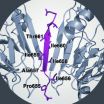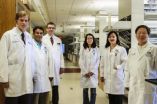Broader approach provides new insight into diabetes genes
2012-09-04
(Press-News.org) Using a new method, diabetes researchers at Lund University, Sweden, have been able to reveal more of the genetic complexity behind type 2 diabetes. The new research findings have been achieved as a result of access to human insulin-producing cells from deceased donors and by not only studying one gene variant, but many genes and how they influence the level of the gene in pancreatic islets and their effect on insulin secretion and glucose control of the donor.
"With this approach, we can explain 25 per cent of variations in blood sugar levels. Previously, the best studies have explained less than three per cent", says Leif Groop from Lund University Diabetes Centre, the principal author of the study, which has been published in the journal Cell Metabolism.
The findings of the study provide greater insight into why, in cases of type 2 diabetes, the insulin-producing beta cells cease to be able to perform their function of producing sufficient insulin to keep blood sugar levels under control.
"We have linked different gene variants to their effect on donated human beta cells and have compared cells from non-diabetics and diabetics", says Professor Groop.
The research team had access to cells from 63 donors, nine of whom had had type 2 diabetes.
The starting point for the work was the 47 known gene variants that have a statistical link to diabetes.
"We used them as 'bait' to find new signal paths and chains of events where the 47 variants work together with other genes. We have to map patterns because a single gene rarely acts on its own", explains Leif Groop.
Various criteria were used to sift out the 20 strongest gene variants. The criteria included a difference between beta cells from healthy individuals and diabetics and a link to insulin secretion and blood sugar levels. The majority of the 20 variants identified were not among the 47 known risk genes.
The central aim of the study is to understand why certain gene variants raise the risk of diabetes.
"By taking a new and more holistic approach, we have gone a step further than previous projects and succeeded in linking together gene variants and their signal paths in human beta cells that cause reduced insulin secretion. The next step is to look in more detail at the way in which the strongest genes affect insulin secretion", says Leif Groop.
###
Publication
Article: 'A Systems Genetics Approach Identifies Genes and Pathways for Type 2 Diabetes in Human Islets'
Published in: Cell Metabolism
Contact: Professor Leif Groop, research team leader, tel.: +46 40 391202, mobile: +46 705 912548 END
ELSE PRESS RELEASES FROM THIS DATE:
2012-09-04
The aim of the study was to assess the applicability across Europe of a generic framework for the professional development of researchers based on the Vitae Researcher Development Framework (RDF). The RDF is a UK-context framework set up with the purpose to better define researcher's professional profiles and to develop guidance for the continuous professional development of researchers. The report reveals that there is a real demand among researchers for a more structured approach towards researcher´s professional development and active career planning.
This new ESF-co-funded ...
2012-09-04
HEIDELBERG, 3 September 2012 – Scientists from the United States and Sweden have discovered a new control point that could be important as a drug target for the treatment of diabetes and other metabolic diseases. A-kinase anchoring proteins or AKAPs are known to influence the spatial distribution of kinases within the cell, crucial enzymes that control important molecular events related to the regulation of glucose levels in the blood. In a new study published in The EMBO Journal, the team of researchers led by Simon Hinke and John Scott reveal for the first time that AKAPs ...
2012-09-04
A centralized prescription network providing real-time information to pharmacists in British Columbia, Canada, resulted in dramatic reductions in inappropriate prescriptions for opioid analgesics and benzodiazepines, widely used and potentially addictive drugs. The findings are reported in a study in CMAJ (Canadian Medical Association Journal).
The study found that PharmaNet, a real-time prescription system implemented in BC pharmacies in July 1995, reduced potentially inappropriate prescriptions for opioids and benzodiazepines in two groups of patients — those on social ...
2012-09-04
To promote good parenting, Canada should remove section 43 of its Criminal Code because it sends the wrong message that using physical punishment to discipline children is acceptable, argues Dr. John Fletcher, Editor-in-Chief, CMAJ (Canadian Medical Association Journal) in an editorial.
Section 43 of the Criminal Code of Canada states "…a parent is justified in using force by way of correction…if the force does not exceed what is reasonable under the circumstances."
The debate over whether spanking children is acceptable as a disciplinary tool for parents or whether ...
2012-09-04
Tumor growth is dependent on interactions between cancer cells and adjacent normal tissue, or stroma. Stromal cells can stimulate the growth of tumor cells; however it is unclear if tumor cells can influence the stroma. In the September issue of the Journal of Clinical Investigation, researchers at MD Anderson Cancer Center report that ovarian cancer cells activate the HOXA9 gene to compel stromal cells to create an environment that supports tumor growth.
Honami Naora and colleagues found that expression of HOXA9 was correlated with poor outcomes in cancer patients and ...
2012-09-04
Ovarian cancer cells hijack surrounding tissues to enhance tumor growth
Tumor growth is dependent on interactions between cancer cells and adjacent normal tissue, or stroma. Stromal cells can stimulate the growth of tumor cells; however it is unclear if tumor cells can influence the stroma. In this issue of the Journal of Clinical Investigation, researchers at MD Anderson Cancer Center report that ovarian cancer cells activate the HOXA9 gene to compel stromal cells to create an environment that supports tumor growth.
Honami Naora and colleagues found that expression ...
2012-09-04
Alexandria, VA – "Warm" and "Antarctica" are not commonly used in the same sentence; however, for scientists, "warm" is a relative term. A team of researchers has discovered that, contrary to previous thinking, the Antarctic continent has experienced periods of warmth since the onset of its most recent glaciation.
Lodged in ocean sediment nearly 20 million years old, ancient pollen and leaf wax samples taken from the Ross Ice Shelf suggest that two brief warming spells, each of which lasted less than 30,000 years, punctuated the omnipresent cold of Antarctica. Warm, ...
2012-09-04
A study led by researchers at the UC San Diego Stem Cell Research program and funded by the California Institute for Regenerative Medicine (CIRM) looks at an important RNA binding protein called LIN28, which is implicated in pluripotency and reprogramming as well as in cancer and other diseases. According to the researchers, their study – published in the September 6 online issue of Molecular Cell – will change how scientists view this protein and its impact on human disease.
Studying embryonic stem cells and somatic cells stably expressing LIN28, the researchers defined ...
2012-09-04
An interdisciplinary team of researchers at Vanderbilt University have developed a way to combine the photosynthetic protein that converts light into electrochemical energy in spinach with silicon, the material used in solar cells, in a fashion that produces substantially more electrical current than has been reported by previous "biohybrid" solar cells.
The research was reported online on Sep. 4 in the journal Advanced Materials and Vanderbilt has applied for a patent on the combination.
"This combination produces current levels almost 1,000 times higher than we were ...
2012-09-04
LEXINGTON, Ky. (Sept. 4, 2012) — A new study by University of Kentucky researchers shows promise for developing ultrastable RNA nanoparticles that may help treat cancer and viral infections by regulating cell function and binding to cancers without harming surrounding tissue.
The study, published in Nano Today, was carried out in the laboratory of Peixuan Guo, the William S. Farish Endowed Chair in Nanobiotechnology at the UK Markey Cancer Center, in collaboration with Dr. Mark Evers, director of the UK Markey Cancer Center.
The study uses RNA (ribonucleic acid) as ...
LAST 30 PRESS RELEASES:
[Press-News.org] Broader approach provides new insight into diabetes genes



